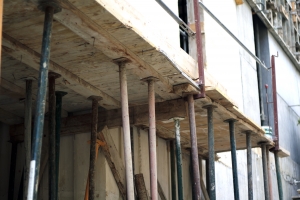Assessor’s Parcel Numbers are usually included in the legal description of a deed. But that does not always work; there are times when the APNs do not exactly describe the individual parcel. The assessor’s office does not necessarily follow the subdivision map in assigned APNs. Parties do not necessarily have the Assessors map to refer to and this leads to confusion in what is being conveyed (or insured by the title insurer!).
This may be why use of an APN in a summons published in a quiet title action is not sufficient. This problem was pointed out in a recent case where some deeds included a metes and bounds description (Metes and bounds are the boundaries of a parcel of real estate that identified by its natural landmarks and measurements), plus APNs. The APN included area that is not within the metes and bounds description. One party said I own it all, and the other said no.
 In XPO Logistics Freight, Inc. v. Hayward Property, LLC, a large property was subdivided into four parcels in a recorded parcel map. But before that, the County Assessor divided the property for (tax purposes) into three parcels with separate APNs shown on an unrecorded assessor’s map. As three numbers were tacked onto four parcels, using an APN does not identify a specific subdivided lot. There were a number of subsequent transactions, resulting in a dispute about what was actually conveyed. Some legal descriptions of the property conveyed included a metes and bounds description plus APNs.
In XPO Logistics Freight, Inc. v. Hayward Property, LLC, a large property was subdivided into four parcels in a recorded parcel map. But before that, the County Assessor divided the property for (tax purposes) into three parcels with separate APNs shown on an unrecorded assessor’s map. As three numbers were tacked onto four parcels, using an APN does not identify a specific subdivided lot. There were a number of subsequent transactions, resulting in a dispute about what was actually conveyed. Some legal descriptions of the property conveyed included a metes and bounds description plus APNs.
 California Real Estate Lawyers Blog
California Real Estate Lawyers Blog







 In
In